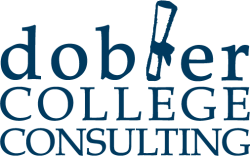Comparing Your Financial Aid Awards
 If you’re fortunate enough to have been admitted to multiple colleges one task you will now be faced with is deciding which one is going to be the most affordable option. If you’ve done your homework ahead of time, and know your Expected Family Contribution (EFC), you should have a ballpark idea of what your net, or true, cost is going to look like.
If you’re fortunate enough to have been admitted to multiple colleges one task you will now be faced with is deciding which one is going to be the most affordable option. If you’ve done your homework ahead of time, and know your Expected Family Contribution (EFC), you should have a ballpark idea of what your net, or true, cost is going to look like.
Note that I didn’t say net price.
Net cost is your out-of-pocket cost – it’s what the college will cost you after gift aid (read, free money!) is applied to your overall cost of attendance. If the school’s cost of attendance, which includes tuition, fees, housing, a meal plan and insurance, is $60,000 and they are going to award you with $25,000 in gift aid, your net cost will be $35,000.
If you’re noticing that I didn’t mention loans, then good for you! Loans, while a part of financial aid awards, are not gifted money. Loans have to be paid back, with interest, and therefore should be factored in after your net cost has been determined. They are helpful, but you can’t dismiss the fact that they have to be paid back later.
So, what do you do with all of this information as you try to decide where you will enroll?
First, gather all your award letters and take a close look at them. Award letters are not created equal. Some will be incredibly detailed and will include your EFC and the complete cost of attendance broken down into semesters with the award broken down into categories (gift aid, loans, work-study) while others will show just a total for the year.
Second, create a little spreadsheet for yourself so that you can compare apples to apples. Make columns for each school and then break down the costs and the awards so that you can see the total for each school.
Third, subtract the gift aid from the cost of attendance and you will get your net cost.
Keep in mind that the lowest net cost isn’t always the best offer. And this is where you have to look at what kind of loans you’re being offered and if you’re being offered work-study.
You already know loans have to be paid back, but if you were to take out a small loan and that makes up the difference between your top choice school and the second place one, that loan may make sense for you. Work-study can be a great help as well, but you have to remember that you will be required to work on campus for so many hours each week to earn it. Even then, it is not applied to your bill because you earn the money on a week-to-week basis like a paycheck.
At the end of the day, be honest with yourself in regards to how much you can handle. You are making a decision about the next four years based on information you have for your first year only. What happens when the cost of attendance goes up in your sophomore year? What if you’re working for your work-study money and its affecting how much time you have to study? What if you struggle and lose your merit scholarship?
These are all questions you need to ask yourself before making any decisions. Just keep in mind that you have to make a final decision by May 1st.
If you would like some assistance with your college search or financial aid process, contact me today for a free 60-minute consultation.
Here’s what other families like yours are saying about how Dobler College Consulting made a difference for them.

 If you’re fortunate enough to have been admitted to multiple colleges you will now be faced with the task of deciding which one is going to be the most affordable option. If you’ve
If you’re fortunate enough to have been admitted to multiple colleges you will now be faced with the task of deciding which one is going to be the most affordable option. If you’ve 

